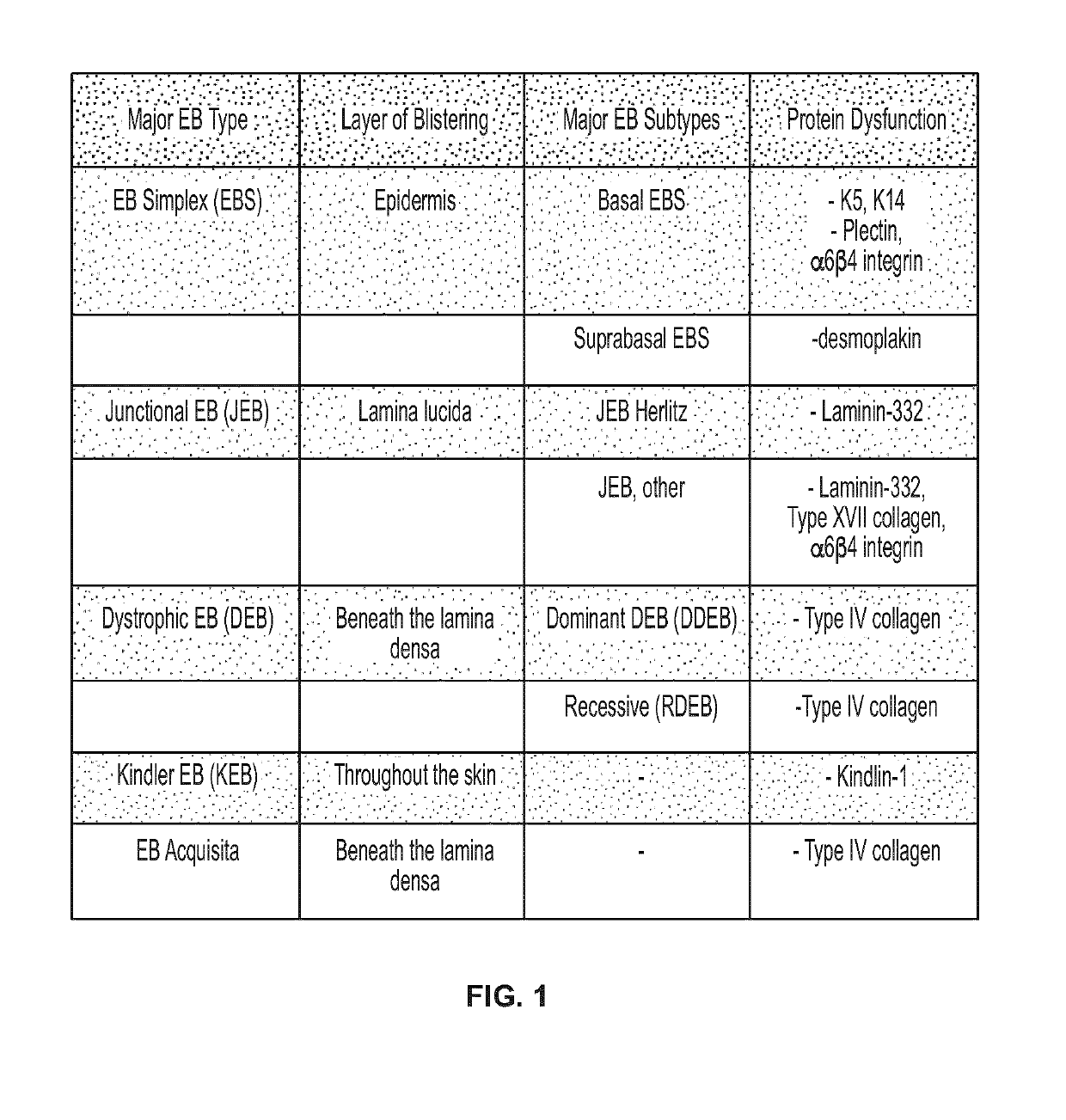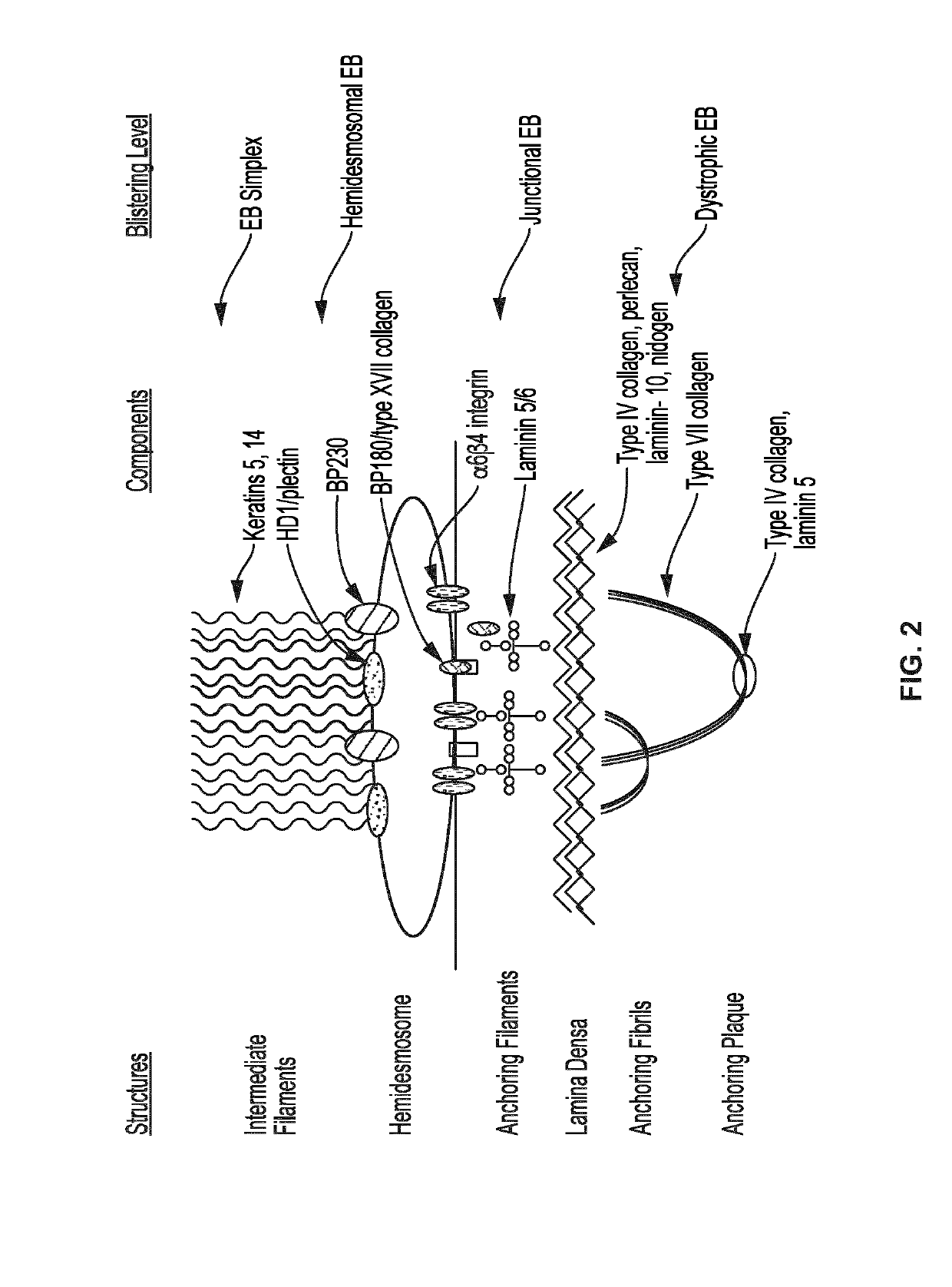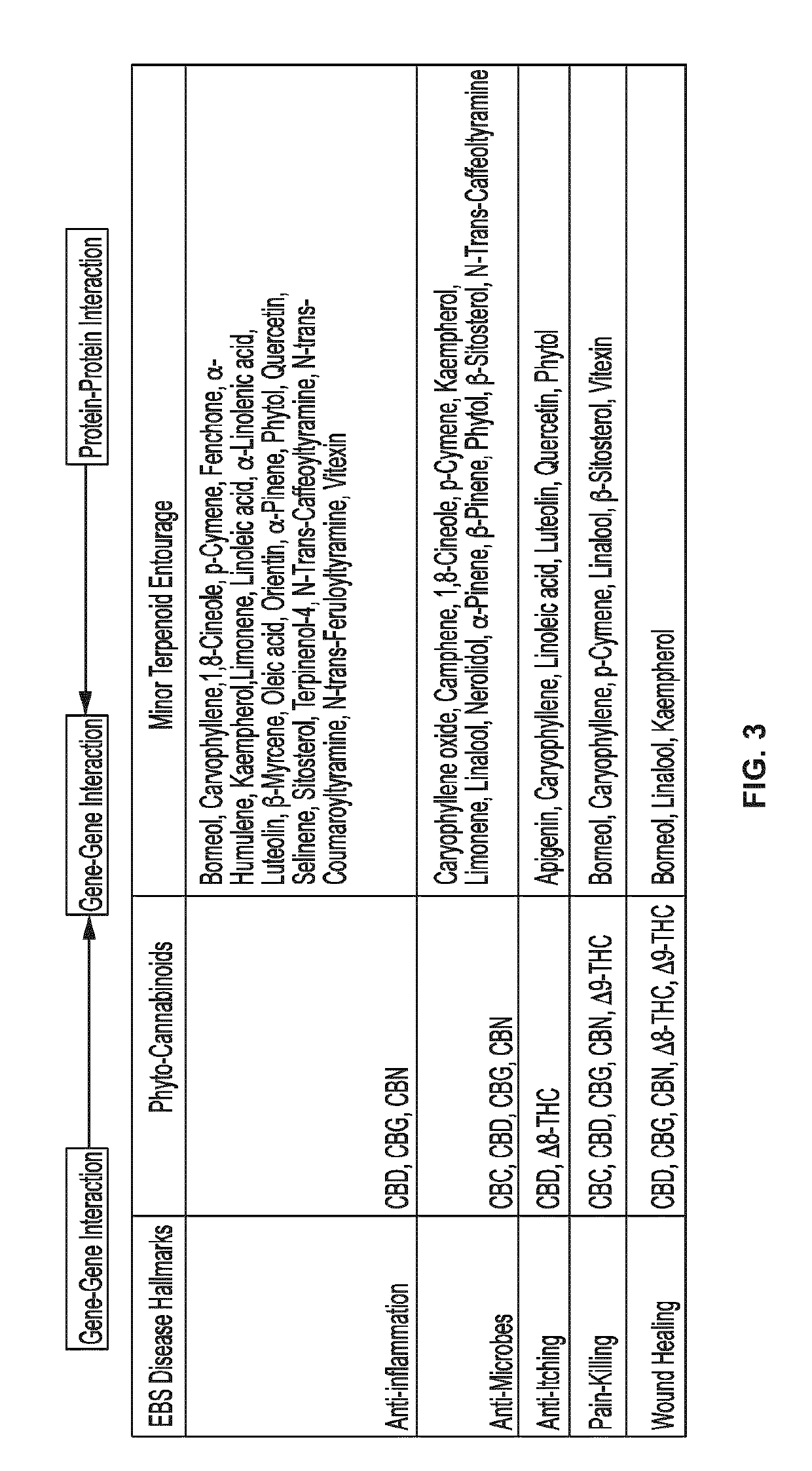Use of topical formulations of cannabinoids in the treatment of epidermolysis bullosa and related connective tissue disorders
a technology of epidermolysis bullosa and topical application of cannabinoids, which is applied in the direction of medical preparations, pharmaceutical delivery mechanisms, drug compositions, etc., can solve the problems of increased risk of cancer (cancer) of the skin, extreme fragility of the skin, and increased risk of eb-related skin malignancies, so as to promote wound healing and skin, reduce pain and itching, and reduce inflammation
- Summary
- Abstract
- Description
- Claims
- Application Information
AI Technical Summary
Benefits of technology
Problems solved by technology
Method used
Image
Examples
example 1
xpression in HaCat Cells is Modulated by Cannabinoids
[0263]Materials to be tested were Phyto-Cannabinoids cannabidiols (CBD), cannabidiolic acid (CBDA), cannabinol, (CBN), cannabidiols: cannabinol (1:0.1 μM), cannabidiols: cannabinol (0.1:1 μM), and cannabidiols: cannabinol (1:1 μM).
[0264]Cell culturing was performed as follows: HaCaT, human immortalized keratinocyte cell line was cultured in Dulbecco's Modified Eagle Medium (DMEM; Life Technologies Hungary Ltd.) supplemented with 10 (V / V) % fetal bovine serum (FBS; Life Technologies Hungary Ltd.) and antibiotics mixture (penicillin and streptomycin in 1:100; PAA Laboratories GmbH, Pasching, Austria) and Fungizone® Antimicotic (in 1:200; Life Technologies Hungary Ltd.) respectively.
[0265]Cells were cultured at 37° C. in humidified, 5% CO2-containing atmosphere, the medium was changed every other day, and cells were sub-cultured at 70-80% confluence in all cases. For the drug treatment, the medium was changed every day.
[0266]Quantita...
example 2
annabinoid Formulations and Skin Penetration
[0300]Skin penetration of formulations described herein was measured according to the following procedure: the formulation was Labrasol, Plo-gel (Poloxomer 407, Lecithin, isopropyl palmitate). The formulation is applied to the center part of the circle and is rubbed to the skin using a scalpel. The sample is mounted to the top of a Franz diffusion cell with the outer layer of the skin facing upward. The receptor medium of the Franz cell is filled with phosphate buffer. The cap of the cell is mounted and clamped. This construct is placed inside the incubator / shaker for 18 hours at 32° C. (FIG. 14). FIG. 15 shows the results from the penetration experiment of FIG. 14 (♦, 6 hours; ▪, 9 hours; ▴, 12 hours).
[0301]FIG. 16 shows a mathematical model of cannabinoid diffusion across skin based on the results of FIG. 15 using a Levenberg-Marquardt fit. FIG. 17 shows the area under the curve for allantoin (left panel) and cannabidiol (right panel). F...
example 3
ids and Wound Healing
[0302]FIG. 19 is a diagram of a model developed in accordance with the experimental results described herein. The model illustrates endocannabinoids and cannabinoid receptors that are implicated in multiple regulatory systems in the skin.
[0303]FIG. 20 is a graph showing the effects of different mixtures of INM-505 (cannabidiols) and INM-517 (cannabinol) on expression of Type II (K5, K6, and K14) and Type I (K15, K16, K17) keratins. INM-505 and INM-517 alone or in combination (INM-505:INM-517) generally increases K5, 14, 15, 16 and 17 protein expression in post-differentiating human keratinocyte cells (concentration dependent effect).
[0304]FIG. 21 shows the activity of cannabinoids in would healing by upregulating extra domain A (EDA)-fibronectin (left panel). TGF-β-induced inhibition of E-cadherin is rescued by cannabinoids (right panel).
[0305]Transforming Growth Factor (TGFβ1) beta is a master regulator of normal healing and pathological fibroproliferative proc...
PUM
| Property | Measurement | Unit |
|---|---|---|
| concentrations | aaaaa | aaaaa |
| concentrations | aaaaa | aaaaa |
| pharmaceutical composition | aaaaa | aaaaa |
Abstract
Description
Claims
Application Information
 Login to View More
Login to View More - R&D
- Intellectual Property
- Life Sciences
- Materials
- Tech Scout
- Unparalleled Data Quality
- Higher Quality Content
- 60% Fewer Hallucinations
Browse by: Latest US Patents, China's latest patents, Technical Efficacy Thesaurus, Application Domain, Technology Topic, Popular Technical Reports.
© 2025 PatSnap. All rights reserved.Legal|Privacy policy|Modern Slavery Act Transparency Statement|Sitemap|About US| Contact US: help@patsnap.com



